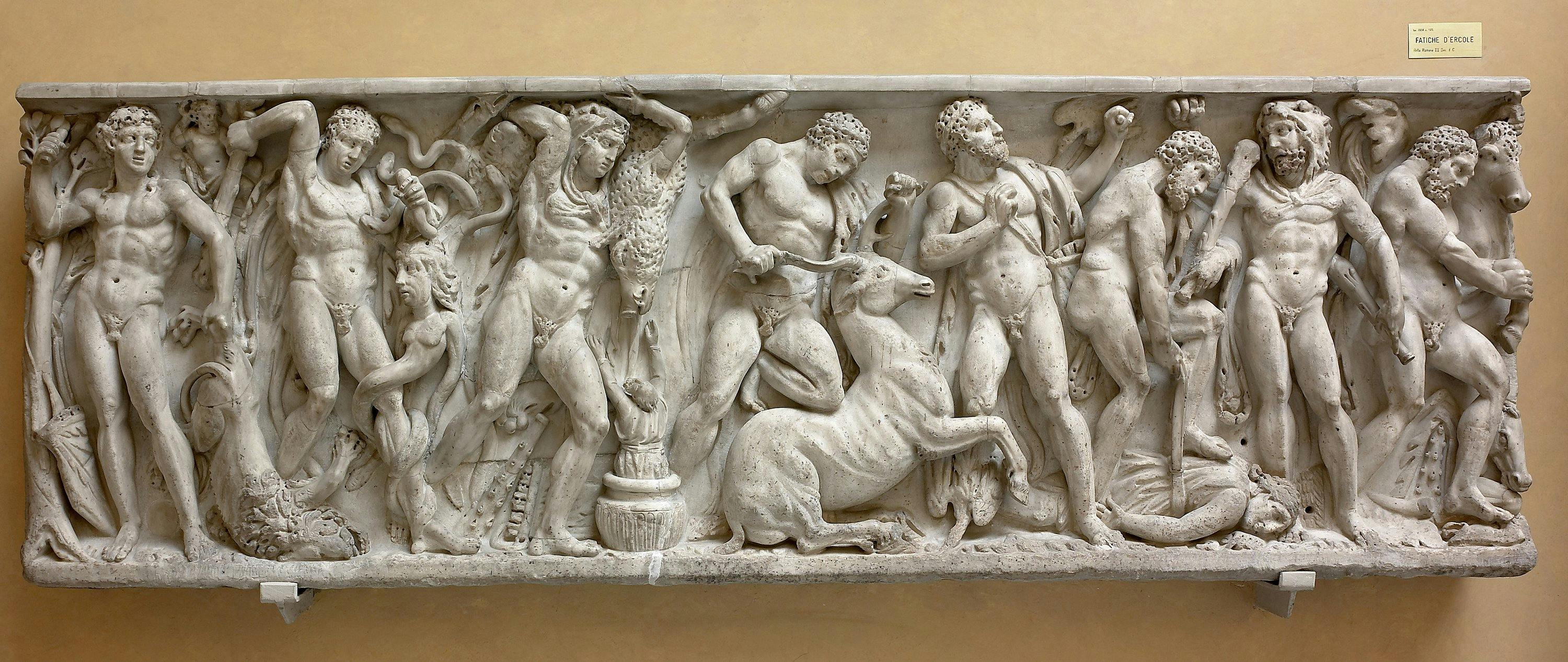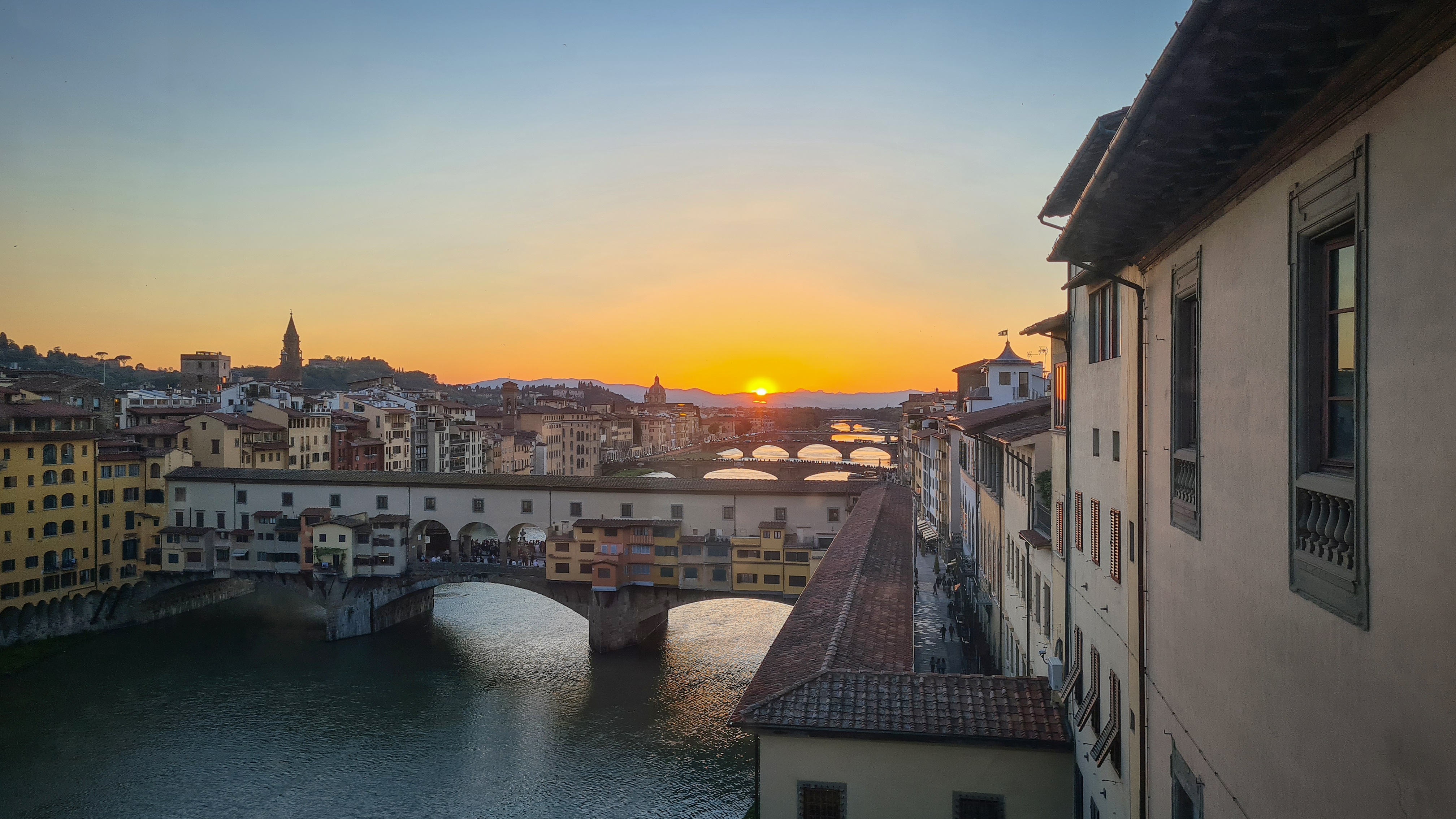Front of sarcophagus depicting the Labours of Hercules
Roman art
The sarcophagus features a decoration in relief on the front, framed above and below by a simple frame composed of a plain band. The scenes carved there show eight of the labours of Hercules, arranged, from left to right, according to the advancement of the hero's age. The traditional order of the labours is reported by Pseudo Apollodorus (2, 5, 1-12), and in this sarcophagus we recognise: the victory over the lion of Nemea; the fight against the Hydra, the nine-headed monster, one of which was immortal, crushed by the hero; the boar of Erimantus; the fight with the hind of Cerinea, both captured and taken to Eurystheus; the birds of the Stymphalus, which fed on human flesh; the group with Hippolyte, killed by Heracles so that he could take his belt to the daughter of Eurystheus; the stables of Augia, cleaned up with the momentum of the river Alphaeus, diverted by the hero; the Cretan bull, captured alive and suffocated with his bare hands; what remains of the scene with the mares of Diomedes, that Hercules captured and took to Eurystheus after making them kill the terrible Diomedes. The superhuman feats of Hercules, often performed with an attitude of defiance to death, can be attributed with a philosophical, moral meaning, and can therefore be interpreted as a kind of spiritual journey. On one hand, Hercules aims to free the earth from monsters, on the other, he reigns in, tames and makes available to man that which was alien to him before. Hercules can represent anyone, man or woman, who struggles with the problems of life, bravely facing the tasks of his or her destiny, enduring pains and tribulations, and following a path that will lead him or her to conquer immortality. This sarcophagus can be compared with another one, also preserved at the Uffizi Galleries (Inv. 1914, no. 110). The theme of the decoration is always the same, but here the figures appear less solid and more slender and crowded. The composition appears to be animated essentially thanks to chiaroscuro and coloristic expedients obtained with extensive use of the drill and the greater height of the relief. In the lower part of the casket, in the centre of the front, a transversal fracture is visible. The frame and the upper part of the decoration feature large integrations; the traces of polychromy (blue and ochre) visible there are also the result of modern interventions. It is also possible that some iconographic details were made of metal, as suggested by the two small holes near the head of Hippolyta, serving for the application of a metal miniature of the two-handed axe, normally associated with the Amazon. In theeighteenth century, at the time of Anton Francesco Gori (1691-1757), Florentine scholar of antiquities, the sarcophagus was in the garden of the Medici Villa of Castello in Florence. It was partially remodelled by the sculptor Innocenzo Spinazzi in 1791, then in 1795 it was transferred to the Gallery and used to decorate the “Stairway of the Royal Gallery”.
A. Filippi, Scultura antica: catalogo dei sarcofagi romani nella città di Firenze e un’ipotesi ricostruttiva del complesso del Battistero, Firenze 2013.
G. Koch - H. Sichtermann, Griechische Mythen Auf Romischen Sarkophagen, Tübingen 1975.
G. Mansuelli, Galleria degli Uffizi, Le sculture (I), Roma 1958.

